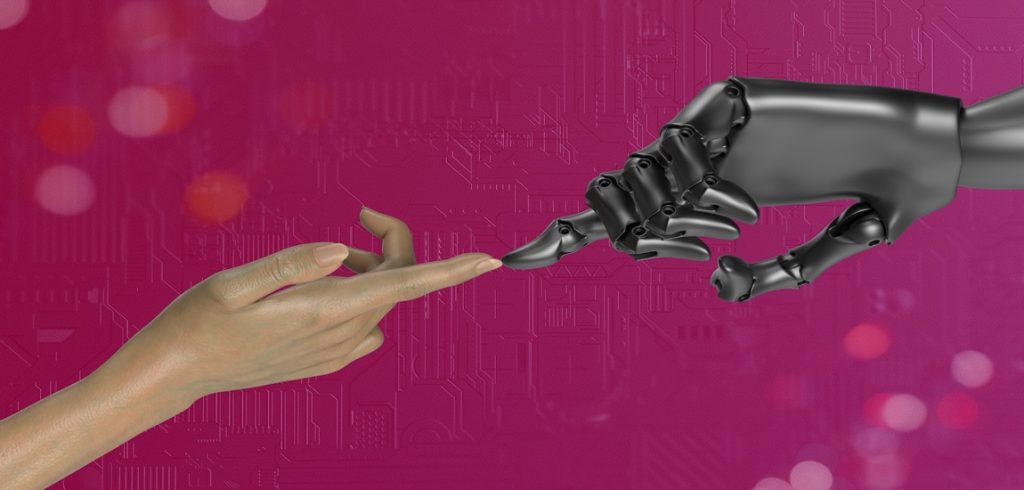
Pic Courtesy - UnSplash
Businesses now face an ever-changing world of cybersecurity risks in the digital age. The rapid growth of technology has resulted in increasingly complex cyberattacks, necessitating the use of cutting-edge tools and tactics to protect their operations. AI has emerged as a game changer in this industry, providing solid solutions for threat identification and risk mitigation. In this blog article, we will look at five major features of AI-driven enterprise security and use real-world examples to demonstrate their efficacy.
1. AI-Based Threat Identification : AI has transformed how organizations spot dangers. Traditional security solutions are vulnerable to novel and previously unknown threats because they rely on preset signatures and regulations. AI, on the other hand, excels in detecting both known and undiscovered risks by analyzing massive datasets and identifying patterns that would otherwise go unnoticed by humans.
Case Study : JPMorgan Chase, for example, has built a machine learning algorithm that scours millions of transactions daily to uncover fraudulent behavior. This AI-powered technology recognizes established fraud trends as well as reacts to emergent risks. It has so saved the corporation millions of dollars while also protecting the assets of its consumers.
2. AI-Driven Risk Mitigation: Risk management is an essential component of cybersecurity. AI improves risk management efficiency and efficacy by delivering real-time information and offering countermeasures. This preventative approach lowers the likelihood and severity of security breaches.
Case Study : The healthcare industry is a prime example of AI-driven risk minimization. The Boston Medical Center used AI to scan electronic health information in order to identify patients who are at high risk of readmission. To lower readmission rates, the AI system offers relevant actions and care regimens. This not only improves patient outcomes but also assists the hospital in avoiding costly readmission penalties.
3. AI-Based Anomaly Detection : Anomaly detection is essential for detecting out-of-the-ordinary activity or departures from the norm inside a network or system. AI shines in this area because it is continually learning and adapting to new data, allowing it to detect small abnormalities that may indicate a security compromise.
Case Study : Consider Tesla, a maker of electric vehicles. Tesla’s AI-powered anomaly detection system checks its self-driving vehicles for unusual actions that could indicate a security issue. It can instantly discover unexpected trends and respond to any weaknesses by evaluating data from thousands of vehicles in real-time, boosting the safety of their self-driving automobiles.
4. Watching Network Traffic : Monitoring network traffic is a critical component of cybersecurity, and AI can be a valuable ally in this attempt. Artificial intelligence-powered systems can scan massive volumes of network data in real time, detecting suspicious activity, potential invasions, and even insider threats.
Case Study : A real-world example is the collaboration between Darktrace, an AI cybersecurity firm, and McLaren Group, the renowned British Formula One team and automobile corporation. Darktrace’s AI technology constantly analyzes McLaren’s network traffic, detecting any anomalies as soon as they occur. It spotted a hostile attack on a supplier’s system in one case, allowing McLaren to take rapid action to neutralize the threat, protecting critical intellectual property and trade secrets.
5. Real-Time Monitoring & Alert : A vital component of any cybersecurity plan is the capacity to recognize and respond to security problems in real time. AI-powered systems enable businesses to continuously monitor their networks, applications, and endpoints and to provide fast notifications in the case of a potential security breach.
Case Study : The world of e-commerce is a perfect example of real-time monitoring and alerting. Amazon, the world’s largest online retailer, uses AI to monitor its huge network of servers and customer data in real time. If an unexpected pattern or activity is noticed, the AI system warns the security staff immediately. Amazon’s ability to respond quickly helps it to preserve its customers’ data while also maintaining the trust of millions of online shoppers.
Finally, the incorporation of AI into enterprise cybersecurity is more important than ever. AI-driven threat identification, risk mitigation, anomaly detection, network traffic monitoring, and real-time monitoring and alerting equip enterprises with the capabilities they need to combat ever-changing cyber threats. Real-world examples from many industries show the concrete benefits of using AI-powered technologies. In order to protect your company’s security in the digital age, adopting AI-driven cybersecurity is not an option, but a must. With the power of AI, you can stay ahead of cyber threats and secure your data and processes.




More Blogs
Expanding Globally: Navigating Challenges and Leveraging Strategies
7 Ways of Making Progress: A Startup Expert’s Guide
AI in the Insurance Business: Revolutionizing the Industry